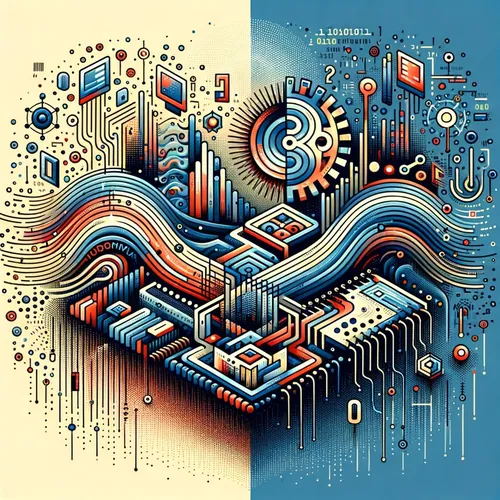Quantum Leap: Certified Randomness Unleashed, Redefining Security and Simulation
- Author
- Quiet. Please
- Published
- Sat 19 Apr 2025
- Episode Link
- https://www.spreaker.com/episode/quantum-leap-certified-randomness-unleashed-redefining-security-and-simulation--65634618
This is your Quantum Tech Updates podcast.
The room is humming with energy. I can almost feel the subtle vibrations of quantum processors waking up in superconducting chillers and ion traps, as if the future is pressing its fingers to the glass, waiting to come in. I’m Leo, your Learning Enhanced Operator, and today on Quantum Tech Updates, we’re diving right into the heart of this week's biggest story—a breakthrough so pivotal, it’s already rippling across the tech world: certified quantum randomness, achieved on hardware that leaves classical systems in the dust.
Let’s step into the lab at Quantinuum, where—just weeks ago—a team led by Dr. Rajeeb Hazra leveraged their newly upgraded H2 quantum computer, now flexing 56 trapped-ion qubits, in partnership with JPMorganChase’s Global Technology Applied Research team. Remember, just last year, reaching this scale with high fidelity and all-to-all connectivity was only a dream. The significance? In a landmark experiment, they hit a hundredfold improvement over previous quantum hardware, producing genuine certified randomness—a mathematical feat that’s foundational for robust quantum security and advanced industry simulations.
To put it in perspective, let’s talk about bits. Classical computers operate on bits: either a 0 or a 1, like a light switch on or off. Quantum bits, or qubits, are like dimmer switches, spinning and shimmering in a superposition of states—on, off, or both at once. Now, imagine trying to produce a random number using a classical computer; it can fake it well, but it’s always anchored to some underlying algorithm, some predictable pattern. Quantum randomness, by contrast, is fundamentally unpredictable—real chaos, certified by physical law itself.
But why does this matter in our everyday world? Think of the financial markets—the titanic flow of transactions, contracts, and encrypted data zipping across global networks. The banks and institutions depending on unbreakable security have been waiting for this: with certified quantum randomness, the cryptographic keys used to secure their data step far beyond what classical methods can offer. This is the difference between a vault door with a numerical passcode and one sealed by the unpredictability of the universe itself.
Scott Aaronson, a name you’ll recognize if you’ve followed quantum computing at all, played a pivotal role in designing the protocols that made this feat possible. His team, collaborating with the world-leading U.S. Department of Energy labs—Oak Ridge, Argonne, and Lawrence Berkeley—helped realize a dream that’s haunted scientists since the earliest days of quantum theory: harnessing uncertainty itself to power computation and security.
Let me give you a glimpse inside the experiment. Picture an immaculate chamber chilled nearly to absolute zero, thin golden wires snaking into a crystal-clear trap where ions, suspended in electromagnetic fields, pulse and dance to laser cues. Each qubit, fragile but fiercely precise, is manipulated with pulses of energy, entangling with its neighbors in a ballet so exquisite that a stray vibration could ruin the whole performance. The results are measurements that no classical computer can feasibly predict or replicate—a feat once dismissed as science fiction.
It’s emblematic of the larger trend in 2025: we’re seeing a shift from general, “universal” quantum computers to highly specialized devices—hardware and software designed for the unique challenges of industries like finance, pharmaceuticals, and logistics. The race isn’t just about more qubits; it’s about more useful, reliable qubits, and layering on software abstractions so that quantum can work hand-in-glove with classical systems, turbocharging the world’s data engines. Think of it as hybrid driving, but for computation: each technology takes over when it’s strongest.
IBM is preparing to deploy its Quantum System...
